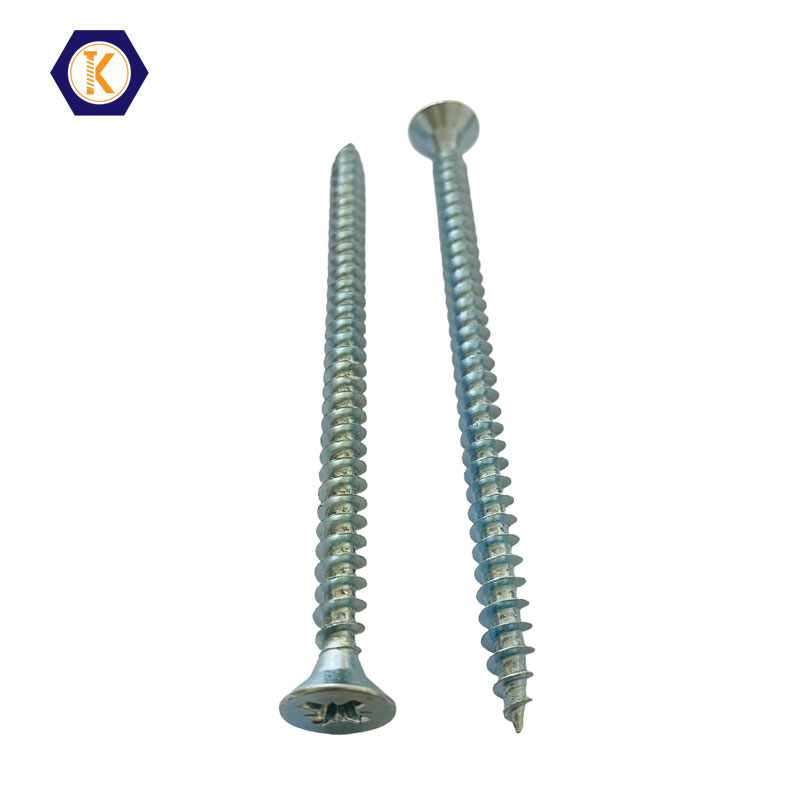Application of Chipboard Screw
2023-10-13
Chipboard screws are commonly used for fastening chipboard, particle board, and other similar materials. Here's a step-by-step guide on how to correctly apply chipboard screws:
1. Select the right screw: Ensure that you choose the appropriate chipboard screw for the job. Consider the length of the screw, the thickness of the material being fastened, and the specific requirements of your project.
2. Pre-drill pilot holes: It's important to pre-drill pilot holes before inserting chipboard screws, especially in dense or thick chipboard or when working close to the edge. The pilot hole diameter should match the shank of the screw, excluding the threads. The pilot hole should be slightly smaller than the screw's diameter, allowing the threads to grip the material securely.
3. Align the materials: Position the pieces of chipboard or other materials you intend to fasten together. Ensure they are aligned properly, and the joint is held firmly in place.
4. Insert the screw: Hold the chipboard screw with a suitable screwdriver or a power drill equipped with a screwdriver bit. Align the screw with the pilot hole and begin slowly driving it into the material. Apply even pressure to prevent the screw from slipping or stripping the threads.
5. Drive the screw in: Continue driving the screw until it is fully inserted into the material. Be careful not to over-tighten the screw, as it may cause the chipboard or other material to split or weaken. Stop when the screw is snugly in place.
6. Countersink if necessary: If you want the screw head to be flush with or below the surface of the chipboard, you can use a countersink bit or a larger drill bit to create a shallow recess for the screw head. This allows for a smooth and even surface.
7. Repeat for additional screws: If you are fastening multiple points, repeat the above steps for each screw, ensuring proper alignment and spacing between screws.
8. Inspect and test: After inserting all the chipboard screws, inspect the joint and ensure that it is securely fastened. Give it a gentle test to ensure it is stable and strong.
Note: It's important to follow manufacturer guidelines and recommendations specific to the chipboard screws you are using. Different types and sizes of screws may have variations in their application techniques.
By following these steps, you can correctly apply chipboard screws, ensuring a secure and reliable fastening for chipboard and similar materials.



